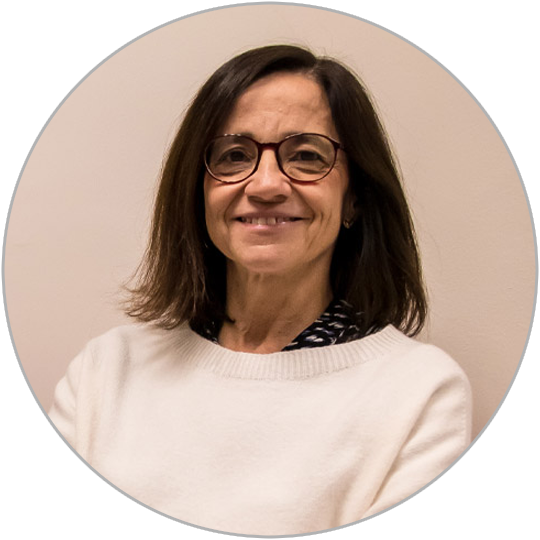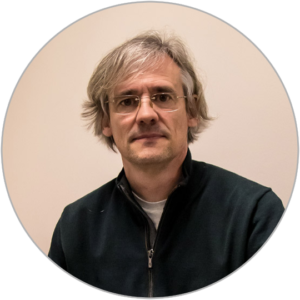Veiga Group
Pluripotent Stem Cell Therapy
The optimization of generation and differentiation methodologies in clinical grade conditions is essential to move forward to clinical application of pluripotent stem cell therapies
Human pluripotent stem cell (hPSC) derivatives provide a unique source of differentiated cells that can potentially repair lost cell function produced by degenerative diseases or by injury. We aim to optimize generation and differentiation protocols that will allow pluripotent stem cells to be used clinically.

ANNA VEIGA, PhD
Group Leader, Regenerative Medicine Program of IDIBELL
Group Leader of P-CMRC
Director of the Stem Cell Bank
Lab focus – Research projects
Clinical translation with hiPSC
Allogeneic hiPSC from homozygous UCB units for high prevalence haplotypes (IPS-PANIA)
In collaboration with Banc de Sang i Teixits. Dr. Sergi Querol (Retos-Colaboración)
This project aims to optimise hiPSC generation towards clinical application, beyond autologous treatments by generating hiPSC from cord blood samples with frequent homozygous HLA haplotypes compatible with a significant percentage of the population. hiPSC generation is adapted to clinically safe conditions and this project allows the creation of an hiPSC collection for basic research and clinical trials for cell therapy.
Plataforma de Biobanco de Muestras Biológicas y Líneas Celulares(IDIBELL BIOCellBank).
The BLC-B's main goal is to provide basic and clinical researchers
updated and optimised methodologies for the generation,
characterisation and banking of human pluripotent stem cell lines
(hPSC), both embryonic stem cells (hESC) and induced pluripotent stem
cells (iPSC), as well as to advise and give support to researchers in the
management of projects in which hPSC are used or derived. Funded by ISCIII.
Germline genome editing for the study of human embryo development
Genome editing with CRISPR/Cas9 in human embryos for the study of early embryonic development
In collaboration with Dexeus Mujer. Dra. Montse Boada
The project involves the adaptation and improvement of CRISPR/Cas9 technology as a genome editing tool in human zygotes donated for research and the use of such technique for the study of genes essential for human embryo development. Embryo morphology and development are analysed by time-lapse methodology to assess the specific role of certain genes in early human embryo development.
Why it matters
The potential of pluripotent stem cells for regenerative medicine is unique and promising. Stem cell research has opened up powerful opportunities for research and drug discovery but clinical application through pluripotent stem cell therapy requires homogenization and safety assessment. Standardisation of generation and differentiation protocols in clinical grade conditions as well as the use of highly compatible hiPSC is needed to envisage human clinical application.
Keywords
Embryonic stem cells, induced pluripotent stem cells, reprogramming, pluripotency, regenerative medicine, cell therapy, stem cell banking, GMP conditions, cord blood HLA homozygous haplotypes, age-related macular degeneration, retinal pigmented epithelium, photoreceptors progenitors, germline genome editing
Publications
Martínez-Moreno R, Perez-Serra A, Carreras D, Aran B, Kuebler B, Brugada R, Scornik F, Perez
GJ, Selga E. Generation of an induced pluripotent stem cell line from a healthy Caucasianmale. Stem Cell Research 60 (2022) 102717.
Martínez-Moreno R, Carreras D, Aran B, Kuebler B, Sarquella-Brugada G, Brugada R, Perez GJ,
Scornik F, Selga E. Generation of four induced pluripotent stem cell lines from a familyharboring a single nucleotide variant in SCN5A. Stem Cell Research 63 (2022) 102847.
Isla Magrané H, Veiga A, García Arumí J, Duarri A. Multi-ocular Organoids from Human iPS CellsDisplayed Retina, Cornea, and RPE Lineages. Stem Cell Res Ther. 2021. 22;12(1):581.
Duarri A, Rodriguez-Bocanegra E, Martínez-Navarrete G, Biarnés M, García M, Lee Ferrano L,
Kuebler B, Aran B, Izquierdo E, Aguilera-Xiol E, Casaroli-Merano RP, Trias E, Fernandez E, Ray A,
Veiga A, Mones J. Transplantation of Human Induced Pluripotent Stem Cell-Derived RetinalPigment Epithelium in a Swine Model of Geographic Atrophy. Int. J. Mol. Sci. 2021, 22(19),
10497.
Álvarez-Palomo B, García-Martinez I, Gayoso J, Raya A, Veiga A, Abad ML, Eiras A, Guzmán-Fulgencio M, Luis-Hidalgo M, Eguizabal C, Santos S, Balas A, Alenda R, Sanchez-Gordo F, Verdugo LP, Villa J, Carreras E, Vidal F, Madrigal A, Herrero MJ, Rudilla F, Querol S. Evaluation of the Spanish population coverage of a prospective HLA hapoblank of induced pluripotent stem cells. Stem Cell Res Ther. 202112, 233.
Álvarez-Palomo B, García-Martinez I, Gayoso J, Raya A, Veiga A, Abad ML, Eiras A, Guzmán-Fulgencio M, Luis-Hidalgo M, Eguizabal C, Santos S, Balas A, Alenda R, Sanchez-Gordo F, Verdugo LP, Villa J, Carreras E, Vidal F, Madrigal A, Herrero MJ, Rudilla F, Querol S. Evaluation of the Spanish population coverage of a prospective HLA hapoblank of induced pluripotent stem cells. Stem Cell Res Ther. 202112, 233.
Ojosnegros S, Seriola A, Godeau AL, Veiga A Embryo implantation in the laboratory an update on current techniques Human Reprod Update. 2021; 27 (3), pp 501–530.
Salas A, Duarri A, Fontrodona L, Ramirez DM, Badia A, Isla-Magrane H, Ferreira-de-Souza B, Zapata MA, Raya A, Veiga A, Garcia-Arumi J, Cell therapy with human induced pluripotent stem cell-derived retinal pigment epithelium and retinal precursor cells prevents visual function loss in a rat model of retinal degeneration. Mol Ther Methods Clin Dev. 2021; 20: 688-702.
Mah N, Seltmann S, Aran B, Steeg R, Dewender J, Bultjer N, Veiga A, Stacey GN, Kurtz A. Access to stem cell data and registration of pluripotent cell lines: The Human Pluripotent Stem Cell Registry (hPSCreg). Stem Cell Res. 2020. 27; 47:101887.
Veiga A, Aran B, Raya A, Messinis I, Mahmood T. EBCOG position statement: ethics of stem cell research earch, Eur J Obstet Gynecol Reprod Biol. 2020; 247:244-245.
Aran B, Lukovic D, Aguilar-Quesada R, Veiga A. Pluripotent stem cell regulation in Spain and the Spanish National Stem Cell Bank. Stem Cell Res. 2020; 48:101956.
Kuebler B, Aran B, Flores R, Pérez-Jurado L A, Veiga A, Corominas R, Cuscó I. Generation of induced pluripotent stem cells (iPSCs) by retroviral transduction of skin fibroblasts from four patients suffering Williams-Beuren syndrome (7q11.23 deletion) Stem Cell Research. 2020; 49:102087.
Kuebler B; Aran B; Flores R; Pérez-Jurado, L A; Veiga A; Cuscó I ;Corominas R. Derivation of induced pluripotent stem cells (iPSCs) by retroviral transduction of skin fibroblasts from four patients suffering 7q11.23 microduplication syndrome. Stem Cell Research. 2020; 49:102092.
Eguizabal C, Aran B, Chuva de Sousa Lopes S.M, Geens M., Heindryckx B, Panula S, Popovic M, Vassena R, Veiga A. Two decades of embryonic stem cells: a historical overview. Hum Reprod Open.2019;(1):hoy024.
Kuebler B, Aran B, Miquel-Serra L, Muñoz Y, Ars E, Bullich G, Furlano M, Torra R, Marti M, Veiga A, Raya A . Integration-free induced pluripotent stem cells derived from a patient with autosomal recessive Alport syndrome (ARAS). Stem Cell Res. 2017; 25:1-5.
Mejía-Ramirez E, Sumarroca M, Veiga A. Possible applications of genome editing to the male germline: technical review Médecine thérapeutique / Médecine de la Reproduction, Gynécologie Endocrinologie 2017;19(4):290-7.
Current Members
Past Members
Past Members
Ignasi Rodriguez-Pizà
Mª Vicenta Camarasa
Yolanda Muñoz
Rita Vassena
Alessandra Giorgetti
Cristina Eguizabal
Anna Seriola
Anna Duarri
Mª Vicenta Camarasa
Yolanda Muñoz
Rita Vassena
Alessandra Giorgetti
Cristina Eguizabal
Anna Seriola
Anna Duarri







